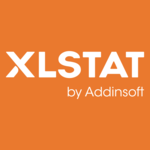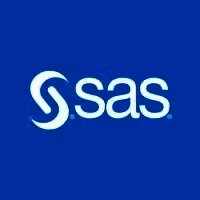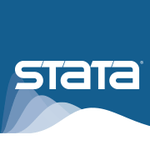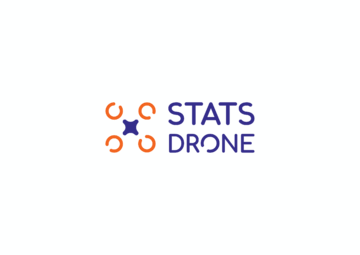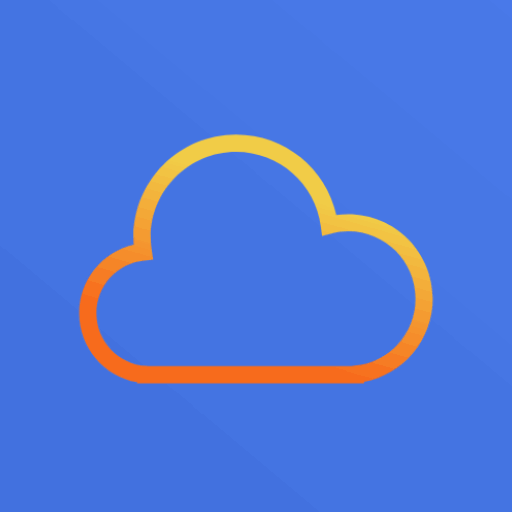What Is Statistical Analysis Software?
Statistical Analysis Software, or SAS, is a sort of computer application that assists analysts and researchers in making sense of enormous amounts of data. It analyzes data using complex algorithms and statistical models to uncover relevant patterns, trends, and relationships. One of the primary functions of statistical analysis software is to assist in making data-driven judgments.
It is widely employed in a number of disciplines, including business, finance, healthcare, and social sciences. SAS's sophisticated capabilities allow it to manage massive volumes of data, both structured and unstructured, making it an invaluable tool in today's data-driven environment. Statistical Analysis Software not only helps users organize and analyze data, but it also has functions for data visualization and reporting.
This enables users to readily communicate their findings to others, making it an effective tool for presenting and sharing ideas with important stakeholders. When purchasing Statistical Analysis Software, it is critical to evaluate the specific requirements of your business or research project. Some software may be better suited to certain industries or data types, whereas others may have more complex functionality for specialized analytic approaches.
When selecting Statistical Analysis Software, it is equally important to consider cost and convenience of use. Some applications may have a longer learning curve, but others include user-friendly interfaces and tutorials to help new users get up and running quickly.
What Are The Recent Trends In Statistical Analysis Software?
Statistical Analysis Software has evolved over time, with new improvements and capabilities becoming available to users. These advancements have significantly improved the utility and effectiveness of statistical analysis software, making it an indispensable tool for organizations, researchers, and analysts. One of the most recent developments in statistical analysis software is the incorporation of artificial intelligence and machine learning capabilities.
This interface allows software to automatically process and analyze enormous datasets, detect patterns and trends, and make accurate predictions. This tendency has led to more advanced and efficient statistical analysis tools, saving users time and effort when analyzing data. Another trend is the growing use of cloud-based statistical analysis software.
This provides simple access to data and analysis tools, regardless of the user's location or device.Furthermore, cloud-based software provides scalability, allowing customers to simply increase their data storage and processing capacity as needed. In recent years, there has been an increase in the adoption of open-source statistical analysis tools. This sort of software is free to use and is often updated by a developer community, making it an affordable option for enterprises and individuals.
However, it should be remembered that open-source software may have fewer features than premium versions. Furthermore, many statistical analysis software packages now include visualizations and dashboards that allow users to show their findings in a visually appealing and understandable format. This is a major advancement because it allows users to effectively communicate their findings to stakeholders or decision-makers.
Finally, as data privacy and security become increasingly important, statistical analysis software is implementing more sophisticated security mechanisms to secure sensitive data. This includes encryption, access controls, and adherence to data protection requirements.
Benefits Of Using Statistical Analysis Software
Statistical analysis software is a valuable tool that can help organizations, researchers, and individuals alike.
Let's explore, we'll look at the different advantages of using statistical analysis software and how it may help you make better judgments.
1. Increased Efficiency: One of the most significant benefits of adopting statistical analysis software is the increased efficiency it provides for data analysis. This program, which can handle enormous datasets and execute difficult computations in a fraction of the time it would take manually, can save you time and effort.
2. Accurate Results: Statistical analysis software analyzes data using modern algorithms and statistical models, producing more accurate and dependable results. This is especially important for organizations that need to make data-driven decisions and researchers seeking exact outcomes.
3. Data Visualization: Most statistical analysis software includes data visualization features that convert complex data into simple visual representations like charts, graphs, and maps. This makes it easier to discover patterns and trends in data, resulting in better decision-making.
4. Customization: Most statistical analysis software allows you to tailor your results by modifying settings and input options. This increases your control over the analysis and ensures that you get the most relevant and accurate answers for your unique requirements.
5. Automation: Using statistical analysis software allows you to automate repetitive operations like data purification and data entering. This not only saves time, but also lowers the likelihood of human error, resulting in more accurate findings.
6. Cost-Effective: While the initial investment in statistical analysis software may appear pricey, it can actually save you money in the long term. With the ability to analyze massive amounts of data rapidly and precisely, you will no longer need to hire new employees or outsource data analysis activities, saving you both time and money.
7. Stay Competitive: In today's data-driven environment, access to statistical analysis tools is critical to staying ahead of the competition. This program enables you to swiftly extract insights and patterns from your data, providing you a competitive advantage in the marketplace.
Important Factors To Consider While Purchasing Statistical Analysis Software?
When it comes to choosing statistical analysis software, there are numerous key elements to consider in order to make the best option for your specific requirements.
Here are some important considerations to bear in mind:
1. Data Compatibility: Before making a purchase, be sure that the software is compatible with the type and format of data you will be using. Some tools may only support specific file types or limit the amount of data that can be evaluated.
2. Features And Functionality: Evaluate the software's features to see if they meet your specific requirements. Common elements to check for include data visualization, regression analysis, and predictive modeling. Make sure the software can handle the types of analysis you need.
3. Ease Of Use: The software's user interface and overall usability can significantly effect your experience. Look for a program that is simple to use, has clear instructions, and provides quick access to key tools and functions.
4. Cost: The cost of statistical analysis software can vary greatly, so you should examine your budget and compare different solutions. Keep in mind that some software may require additional costs for upgrades and maintenance.
5. Support And Training: If you discover any problems or require assistance, you should have access to technical support from the software supplier. Consider whether the program provides training materials or webinars to assist you make the most of its features.
6. Integration With Other Tools: If you intend to utilize the statistical analysis software in conjunction with other programs or platforms, ensure that it is compatible and offers integrations.
7. Customer Reviews And Recommendations: Reading reviews and feedback from other users will help you understand the software's performance and usefulness. Take note of any recurring concerns or complaints, as well as pleasant experiences and recommendations.
By taking these criteria into account, you can make an informed decision about statistical analysis software that suits your individual requirements and assists you in achieving your analytical objectives.
What Are The Key Features To Look For In Statistical Analysis Software?
When it comes to choosing statistical analysis software, there are a few crucial characteristics to consider before making a purchase. These qualities influence not just the software's capabilities and simplicity of use, but also its compatibility with your study objectives and data.
1. User-Friendly Interface: The software's interface should be simple to use and understand. This will allow new users to quickly learn how to use the software, increasing productivity.
2. Data Import And Management: Look for software that allows you to easily import and manage data from a variety of sources, including spreadsheets, databases, and text files. It should also include features for data cleansing and manipulation.
3. Statistical Testing And Analysis: The primary purpose of statistical analysis software is to run statistical tests and analyses. Look for software that includes a variety of tests and visualization choices to effectively examine your data.
4. Customization And Flexibility: Methods and tactics may alter depending on the research project. Check that the program has customization choices and is adaptable enough to suit diverse statistical models and methodologies.
5. Integration With Other Tools: Statistical analysis is frequently a component of a broader research project. Consider software that works seamlessly with other tools like data mining, text analysis, and charting.
6. Automation And Reproducibility: Repetition and reproducibility are critical in research. Choose software that allows you to automate processes and workflows while also saving and reproducing your analyses.
7. Technical Assistance And Training: It is critical to select software that provides dependable technical assistance and training materials. Look for software that includes user guides, tutorials, and online forums for support.
8. Cost And Licensing: Statistical analysis software might be free or pricey. Consider your budget and the license terms that are most appropriate for your needs - perpetual licenses, subscriptions, or academic licenses.
9. Platform Compatibility: Check that the software is compatible with your operating system, hardware, and any other applications you use for research.
10. Security And Privacy: As data privacy and security become more critical, use software that has data encryption and other security measures to safeguard your research data.
Why Do Businesses Need Statistical Analysis Software?
Statistical analysis software is a valuable asset for firms of all sizes and industries. It enables businesses to collect, analyze, and interpret huge amounts of data in order to make sound decisions and promote corporate success. One of the primary reasons that firms require statistical analysis software is to obtain important insights into their operations and performance.
With this program, businesses may find patterns, trends, and correlations in their data, providing critical information for strategic planning and decision-making. Furthermore, statistical analysis tools can assist firms in identifying possible issue areas as well as improvement chances. Companies may improve their processes, boost efficiency, and increase profitability by examining data from numerous sources such as sales, customer feedback, and market trends.
In today's extremely competitive business environment, staying ahead of the competition is critical. Statistical analysis software allows organizations to make data-driven decisions fast, providing them an advantage over competitors who rely on guesswork or out-of-date techniques. Another key advantage of statistical analysis software is its capacity to analyze and predict future trends.
Businesses may create accurate forecasts about market performance, customer behavior, and future trends by leveraging historical data and modern algorithms. This information is extremely useful for designing efficient marketing strategies, forecasting product demand, and optimizing inventory levels. Furthermore, statistical analysis software can assist organizations comply with regulatory obligations.
Companies that provide accurate and well-documented data can assure regulatory compliance and avoid costly penalties. Finally, with today's business world's increasing reliance on data and analytics, having reliable statistical analysis software is no longer a luxury, but rather a requirement. It can save time and resources by automating data processing, removing the possibility of human error, and delivering simple visuals.
How Much Time Is Required To Implement Statistical Analysis Software?
The time required to implement statistical analysis software varies according to an organization's individual demands and requirements. The implementation procedure can last anything from a few weeks to many months. The first step in deploying statistical analysis software is to establish the organization's specific goals and objectives.
This includes determining which data needs to be analyzed, the time frame for the analysis, and any unique features or functionality that are necessary. Once the goals and objectives have been set, the following step is to select the appropriate software for the organization's needs. This could include researching and evaluating various software solutions, visiting demos, and soliciting input from other users.
After selecting the program, the implementation procedure begins. This often includes installing software, configuring user accounts and permissions, and importing data into the system. Depending on the magnitude and complexity of the data, this process may take some time. The next step is to tailor the program to the organization's specific needs. This includes tailoring dashboards, reports, and analytics to deliver the most relevant and helpful data to the enterprise.
Once the program has been configured, users must be trained and onboarded to ensure their comfort and proficiency in using it. This could include hosting training sessions or providing online lessons and tools. The final step in developing statistical analysis software is to test and improve the system. This assists in identifying any flaws or faults that must be fixed before the software goes online.
What Is The Level Of Customization Available In Statistical Analysis Software?
The level of customization offered by statistical analysis software varies substantially depending on the software and its features. Most statistical analysis software provides a great level of flexibility and customization, allowing users to personalize their study to their individual requirements. The capacity to select and import data from several sources is an important component of customization in statistical analysis software.
Instead of being limited to pre-selected datasets, users can now study individual datasets of interest. Furthermore, many statistical analysis software applications provide a diverse set of statistical methodologies and approaches, allowing users to choose the most appropriate and customizable approach for their data. This includes selecting the type of analysis, modifying the parameters, and tailoring the outputs to their individual needs.
Another component of customization is the ability to add numerous external libraries or code snippets to improve the software's functionality. This enables users to write custom scripts and automate activities, saving time and effort during the analytical process. Furthermore, statistical analysis software frequently includes configurable visualization options, allowing users to design charts and graphs to their preferences.
Adjusting colors, labels, and axes can help produce more visually appealing and informative data presentations. It is important to note that the level of customization offered varies depending on the statistical analysis software. Some may include more advanced customization choices, but others may have a more straightforward and user-friendly interface. Overall, the level of customization offered by statistical analysis software is a crucial consideration when making a purchase. It enables users to tailor their analyses, resulting in more accurate and meaningful results, making the software an important tool for data-driven decision making.
Which Industries Can Benefit The Most From Statistical Analysis Software?
Statistical analysis software is a powerful tool that can benefit a wide range of enterprises and industries. From finance and healthcare to marketing and manufacturing, statistical analysis software has the potential to improve and enhance decision-making processes, increase efficiency and profitability, and ultimately contribute to an organization's overall performance.
The healthcare industry can greatly benefit from statistical analysis tools. Given the growing complexity and volume of healthcare data, healthcare practitioners can utilize statistical analysis tools to evaluate and interpret huge datasets, detect patterns and trends, and make informed decisions about patient care, treatment plans, and resource allocation.
This can result in better patient outcomes, cost savings, and more efficient healthcare delivery. The financial business is another area where statistical analysis tools can be used effectively. Financial institutions, such as banks and investment businesses, can use statistical analysis tools to track market trends, anticipate financial performance, and identify potential dangers.
This can help with strategic investment decisions, portfolio management, and risk management, resulting in higher profitability and competitiveness. Manufacturing is another business that might greatly benefit from statistical analysis software. Manufacturers can use statistical analysis to monitor and analyze various production processes, discover and decrease waste and defects, and improve supply chain operations.
This can lead to increased productivity, lower costs, and more overall efficiency. Aside from these, statistical analysis software can add value to businesses such as marketing, retail, and education. Businesses can use consumer data and market trends to establish focused marketing campaigns, enhance pricing methods, and improve customer happiness. In education, statistical analysis software can help educators make data-driven decisions by identifying areas for improvement and tailoring educational programs to students' requirements.
Conclusion
Finally, when deciding on statistical analysis software, there are some important variables to consider. It is critical to first determine your individual data analysis requirements before comparing the features and capabilities of each product. Consider the level of technical expertise needed, compatibility with your existing systems, and budget limits.
Make careful to examine the software provider's reputation and customer support to ensure a nice and dependable experience. Overall, investing in high-quality statistical analysis tools can considerably improve your data analysis efforts and lead to more informed business decisions. Make wise decisions and gain the benefits of powerful and accurate statistical analysis.




